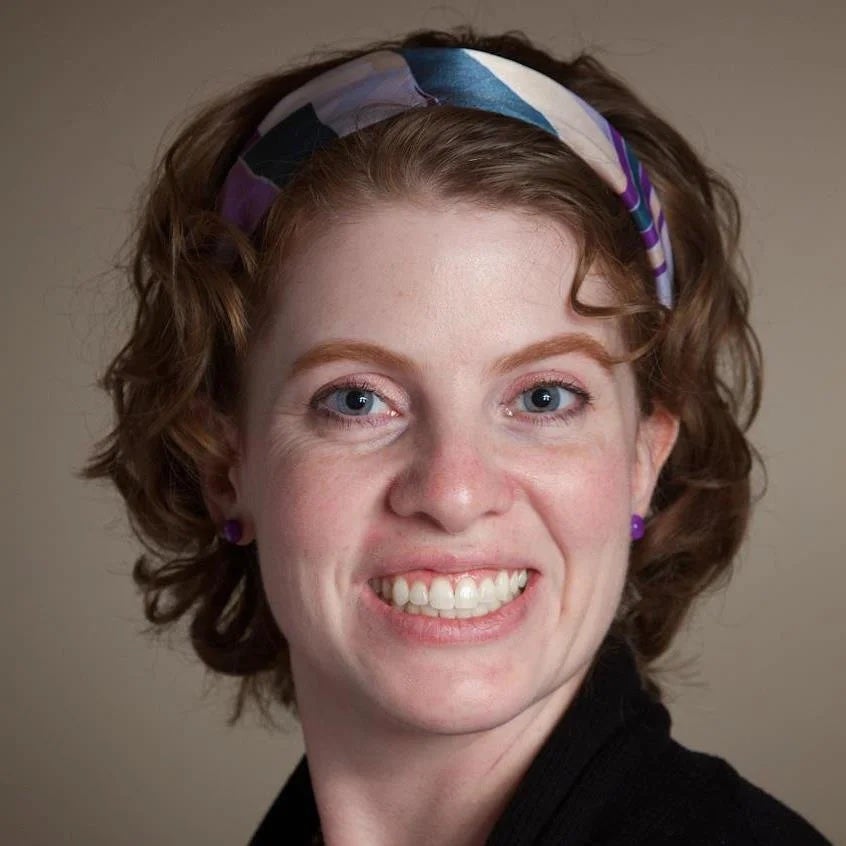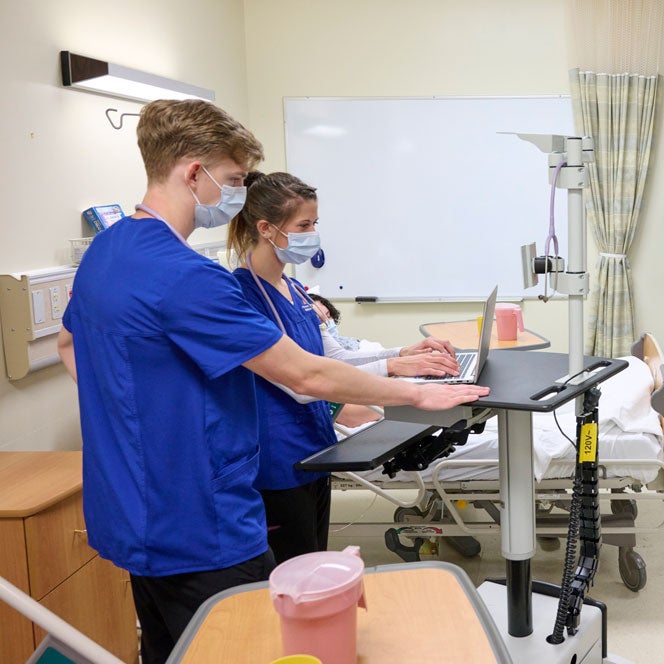There used to be a wide disconnect between student nurses’ clinical experiences in hospitals – where they use electronic documentation – and the Simulation Center. Thanks to School of Nursing Clinical Instructor Christine Larsen, new technology is helping nursing education mirror the workplace.

Medication administration records – or MARs, as they’re referred to by nurses – are the charted medications given to patients. They record details such as the medication name, dosage, date and time. These days, most healthcare facilities use electronic versions (eMAR, for short) that are included in their electronic health record system, such as the EPIC program the Simulation Center implemented in 2023.
With a background in computer programming, Larsen offered to design an eMAR for students to use in simulations and skills labs. Larsen’s program – called NURSETEC – is separate from the Center’s sandbox version of EPIC; however, the two programs work in tandem to offer students a simulated workplace environment.
How does it work?
When students log into Larsen’s web-based eMAR, they’re able to view simulated patient data. Then they go through the process of scanning barcodes, since research indicates fewer medication errors occur when nurses use barcodes in medication administration.
Students practice scanning the patient’s wristband barcode, cross-checking it with the data in the eMAR, locating the appropriate medications in the med cart, and scanning the medication’s barcode. This process logs the medication being administered.
The aim of Larsen’s eMAR is to teach students the essential skills necessary for using one. This includes the physical habit of scanning barcodes, as well as the clinical judgment to vet the information. The goal is to ensure they’re safely giving medication to the right patient, since a crucial part of using any assistive technology is not assuming the data presented is 100% correct.
“We’re not only teaching them the process, but the thought that has to go into it so they’re not completely relying on the technology,” Larsen said.
Tailored to educational settings
To design the eMAR, Larsen thought through the lens of a student: what do they need to learn? She landed on patient safety concepts and psychomotor skills, not trying to visually replicate the formatting of programs students might use in other clinical settings.
“It is not exactly like what they see in the hospital, but it teaches them the same concepts,” Larsen explained.

Her resulting program is versatile for educational settings in both skills labs and simulations.
Skills labs require students to practice one scenario repetitively; if two students are practicing at the same station, when the first is finished, Larsen designed the eMAR to reset the scenario from the beginning. This way, the second student gets an exact duplicate experience of administering a particular medication.
NURSETEC also functions in the chronological environment of simulations. If a student walks into a patient’s room in the Simulation Center and they’ve already received their medication, the eMAR shows this. In this scenario, students gain practice reading the patient’s chart and using their judgment to not administer medication that was already given by another nurse.
“Our new curriculum has given us the opportunity to bring simulation into the lab and expand the students’ exposure to clinical judgment through hands-on practice. By incorporating Christine’s NURSETEC, we bring our practice scenarios to life and give the students in-the-moment feedback on their skills and judgment,” said Tracee Chapman, simulation faculty development coordinator.
Larsen earned her bachelor’s of science in nursing from Boise State in 2018 and is currently pursuing a master’s degree in nursing informatics.